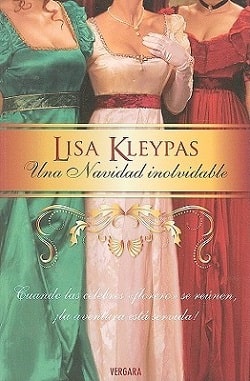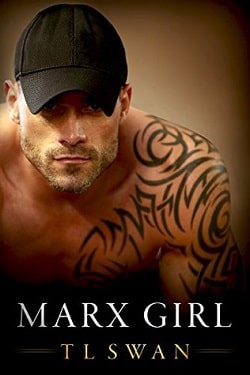“Swipe to the next photo.”
Garza swiped. The next screen showed an enlargement of the photo—this one focused on the admiral’s right hand as it swung out in front of him. Garza immediately saw a marking on Ávila’s palm. It appeared to be a tattoo.
Garza stared at the image for a long moment. The symbol was one he knew well, as did many Spaniards, especially the older generations.
The symbol of Franco.
Emblazoned in many places in Spain during the middle of the twentieth century, the symbol was synonymous with the ultraconservative dictatorship of General Francisco Franco, whose brutal regime advocated nationalism, authoritarianism, militarism, antiliberalism, and National Catholicism.
This ancient symbol, Garza knew, consisted of six letters, which, when put together, spelled a single word in Latin—a word that perfectly defined Franco’s self-image.
Victor.
Ruthless, violent, and uncompromising, Francisco Franco had risen to power with the military support of Nazi Germany and Mussolini’s Italy. He killed thousands of his opponents before seizing total control of the country in 1939 and proclaiming himself El Caudillo—the Spanish equivalent of the Führer. During the Civil War and well into the first years of dictatorship, those who dared oppose him disappeared into concentration camps, where an estimated three hundred thousand were executed.
Depicting himself as the defender of “Catholic Spain” and the enemy of godless communism, Franco had embraced a starkly male-centric mentality, officially excluding women from many positions of power in society, giving them barely any rights to professorships, judgeships, bank accounts, or even the right to flee an abusive husband. He annulled all marriages that had not been performed according to Catholic doctrine, and, among other restrictions, he outlawed divorce, contraception, abortion, and homosexuality.
Fortunately, everything had now changed.
Even so, Garza was stunned by how quickly the nation had forgotten one of the darkest periods in its history.
Spain’s pacto de olvido—a nationwide political agreement to “forget” everything that had happened under Franco’s vicious rule—meant that schoolchildren in Spain had been taught very little about the dictator. A poll in Spain had revealed that teenagers were far more likely to recognize the actor James Franco than they were dictator Francisco Franco.
The older generations, however, would never forget. This VICTOR symbol—like the Nazi swastika—could still conjure fear in the hearts of those old enough to remember those brutal years. To this day, wary souls warned that the highest reaches of Spanish government and the Catholic Church still harbored a secret faction of Francoist supporters—a hidden fraternity of traditionalists sworn to return Spain to its far-right convictions of the past century.
Garza had to admit that there were plenty of old-timers who looked at the chaos and spiritual apathy of contemporary Spain and felt that the country could be saved only by a stronger state religion, a more authoritarian government, and the imposition of clearer moral guidelines.
Look at our youth! they would shout. They are all adrift!
In recent months, with the Spanish throne soon to be occupied by the younger Prince Julián, there was a rising fear among traditionalists that the Royal Palace itself would soon become another voice for progressive change in the country. Fueling their concern was the prince’s recent engagement to Ambra Vidal—who was not only Basque but outspokenly agnostic—and who, as Spain’s queen, would no doubt have the prince’s ear on matters of church and state.
Dangerous days, Garza knew. A contentious cusp between past and future.
In addition to a deepening religious rift, Spain faced a political crossroads as well. Would the country retain its monarch? Or would the royal crown be forever abolished as it had been in Austria, Hungary, and so many other European countries? Only time would tell. In the streets, older traditionalists waved Spanish flags, while young progressives proudly wore their antimonarchic colors of purple, yellow, and red—the colors of the old Republican banner.
Julián will be inheriting a powder keg.
“When I first saw the Franco tattoo,” Martín said, drawing Garza’s attention back to the tablet, “I thought it might have been digitally added to the photo as a ploy—you know, to stir the pot. Conspiracy sites all compete for traffic, and a Francoist connection will get a massive response, especially considering the anti-Christian nature of Kirsch’s presentation tonight.”
Garza knew she was right. Conspiracy theorists will go crazy over this.
Martín motioned to the tablet. “Read the commentary they intend to run.”
With a feeling of dread, Garza glanced at the lengthy text that accompanied the photo.
ConspiracyNet.com
EDMOND KIRSCH UPDATE
Despite initial suspicions that Edmond Kirsch’s murder was the work of religious zealots, the discovery of this ultraconservative Francoist symbol suggests the assassination may have political motivations as well. Suspicions that conservative players in the highest reaches of Spanish government, perhaps even within the Royal Palace itself, are now battling for control in the power vacuum left by the king’s absence and imminent death …
“Disgraceful,” Garza snapped, having read enough. “All this speculation from a tattoo? It means nothing. With the exception of Ambra Vidal’s presence at the shooting, this situation has absolutely nothing to do with the politics of the Royal Palace. No comment.”
“Sir,” Martín pressed. “If you would please read the rest of the commentary, you’ll see that they are trying to link Bishop Valdespino directly to Admiral Ávila. They’re suggesting that the bishop may be a secret Francoist who has been whispering in the king’s ear for years, keeping him from making sweeping changes to the country.” She paused. “This allegation is gaining a lot of traction online.”















